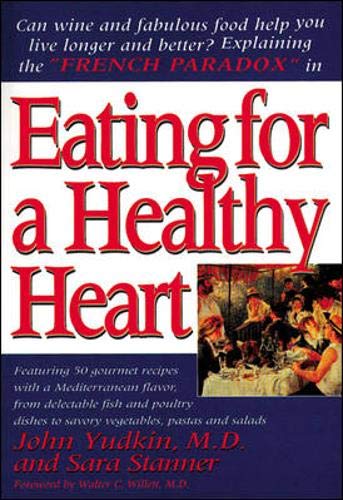Dr Justus Apffelstaedt: Resveratrol in red wine – 30 years of discovery
By Justus Apffelstaedt, 21 April 2025

Resveratrol was first described in 1939. Chemically it is classified as a polyphenol. Polyphenols are important in the metabolism of plants where resveratrol is one of the mediators of response to injury. Also in animals and humans, polyphenols are common bioactive compounds. Readers will be familiar, for example, with cholesterol and sex hormones. A great deal of excitement was created by a publication in 1992 by French researchers Renaud and De Lorgeril in the prominent scientific journal The Lancet which hypothesized that moderate wine consumption may be an explanation for the “French paradox”: A diet rich in saturated fatty acids, considered evil by many a dietician, and widespread smoking did not lead to a high rate of cardiovascular disease and death in the presence of concomitant moderate consumption of wine. The excitement was enhanced by the finding that red wine is particularly rich in resveratrol, which is found in the grape skins; much less so in the skins of white wines. Polyphenols and in particular resveratrol have important anti-oxidative and anti-inflammatory effects in vitro which could make them important preventative and/or therapeutic agents in such diverse conditions as cardiovascular disease, diabetes, neurodegenerative disorders such as Alzheimer’s disease, cancer and obesity. These conditions are the main mechanisms of ageing and ultimately death in humans; one could conclude that a magic bullet to prevent ageing had been found.
In separating the hype from established scientific fact, a cursory search on PubMed, the central database for any scientific medical publications, yields more than 19,000 publications, most of which are either poor quality, reviews or describe results of in vitro and animal research. But already, with favourable in-vitro-generated data, resveratrol appeared as a supplement in anti-ageing sections of health shops; currently Takealot.com lists 32 different supplements of pure “Resveratrol” and many more with resveratrol as part of a cocktail of ingredients.
As next step in the scientific evaluation, animal studies were done to confirm the lab findings in biologic systems. Promising results were obtained mainly in rats, mice and dogs for strokes, neurodegenerative disease (Alzheimer’s), cardiovascular disease, diabetes, infertility, cancer and even osteoporosis. In human trials, however, even in large dosages resveratrol did not achieve active concentrations due to poor uptake and rapid metabolization already in intestines and further in the liver and equally rapid excretion by the kidneys. While in animal studies dosages theoretically can be driven up endlessly, toxicity of large dosages has been a limiting factor in human studies. Mercifully, this toxicity was comparatively mild with nausea, vomiting and diarrhoea being most common. Still, bioavailability was limited to concentrations that from in-vitro and animal research are regarded as ineffectively low; in order to achieve the dosages of resveratrol given as tablets in clinical trials, one would have to drink at least 35 – 70 litres of Pinot Noir or St Laurent (the wines with the highest resveratrol level) per day! This conversely means, that the beneficial effects of moderate wine consumption are most likely not related solely to its resveratrol content but much rather a combination of multiple beneficial components.
Where does all that effort leave resveratrol in red wine today? Results from over 200 clinical trials of resveratrol have pointed to improvement of a variety of biochemical parameters but frustratingly have failed to deliver any tangible real-life benefit such a reduction in cardiovascular deaths. Research now goes in three broad directions: The first one is supported by the observation that in the majority of “blue zones”, where people have an extraordinary longevity, moderate wine consumption is part of the daily diet. Here moderate wine consumption is one of the pillars of a complex, multilayered “matrix” that in its entirety promotes a long, healthy life. Research centres on identifying the pillars of this matrix and their relative importance. For example, the nutritional aspects of that matrix contain not only wine as one of the most important elements, but also certain nuts, fruits, legumes, plant-based protein, etc. The second direction is increasing the bioavailability of resveratrol through complex chemical engineering such as incorporating resveratrol in nanoparticles to overcome the poor absorption and rapid intestinal metabolization. This will lead to applications that due to probably high cost will be in the therapeutic use of resveratrol in established disease. The third direction concerns the metabolites of resveratrol and their effects.
It is my opinion, that results for the second and third direction of research will take at least another decade to result in effective preventative/therapeutic agents in humans. As for the first direction, there is already now a plenitude of research confirming what the main elements of a healthy life-style are: A healthy diet, weight control, regular exercise and a glass of good wine daily. Cheers to that!
- Dr. Justus Apffelstaedt is a specialist in breast and thyroid health, leading Apffelstaedt & Associates in Cape Town and Windhoek. A surgeon, oncologist, and researcher, he was Associate Professor of Surgery at Stellenbosch University (1994–2017) and Head of Surgical Oncology, managing 1,000-plus cancer cases annually. He has more than 50 publications, shaped South Africa’s breast cancer screening policy, and co-founded Breast Surgery International. A sought-after speaker, he has given over 100 international lectures. He also holds an MBA and a Diploma in Wine. Through Apffelstaedt & Associates, he continues to advance specialized, patient-centered care in Southern Africa.








Comments
0 comment(s)
Please read our Comments Policy here.